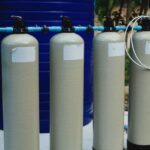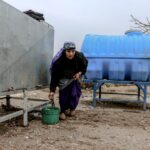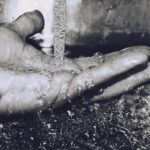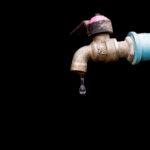The Connection Between Agriculture and Water Pollution
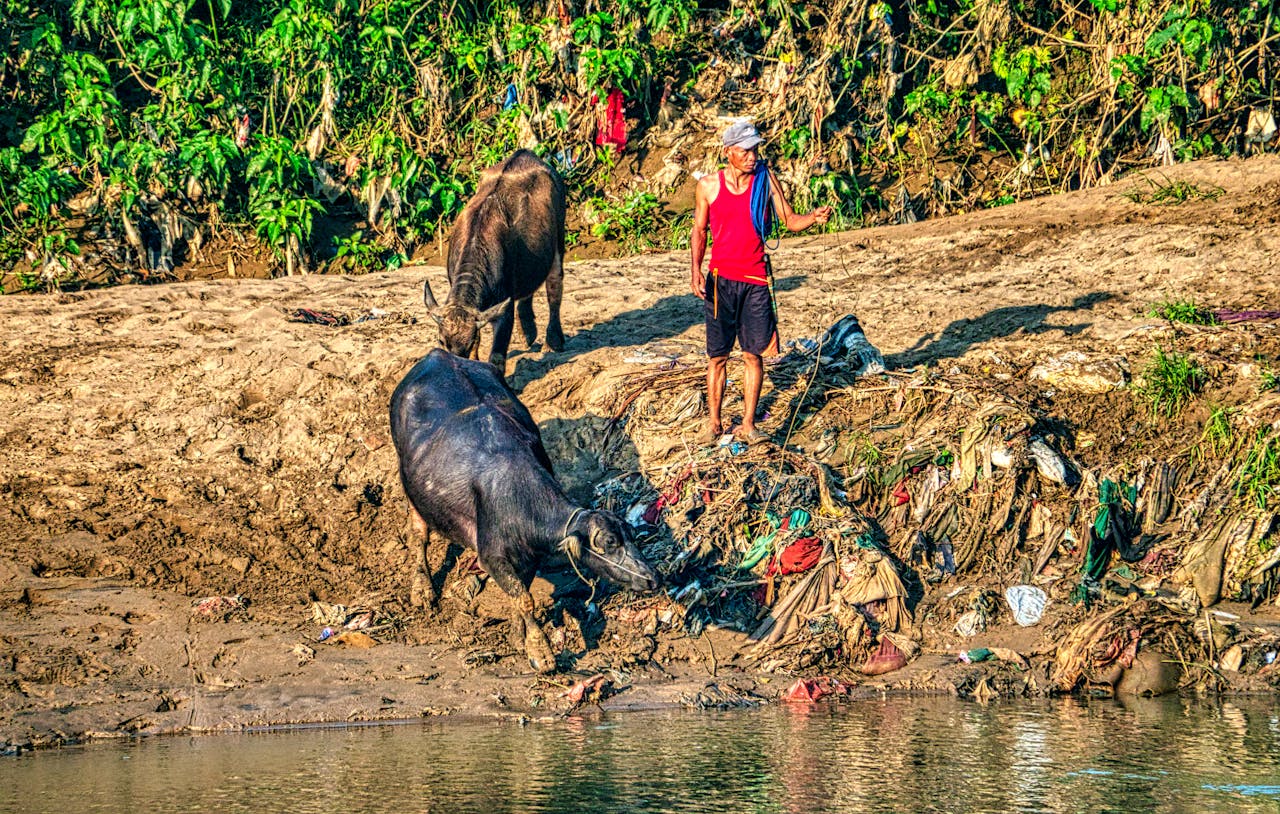
Water is essential for farming, but the way agriculture uses and affects water has serious consequences. Farms need water for crops and livestock, but the chemicals and waste from these activities often pollute rivers, lakes, and underground water sources. This pollution affects drinking water, harms aquatic life, and damages the environment.
Finding a balance between growing enough food and keeping water clean is important. Farmers, governments, and communities must work together to ensure that agriculture doesn’t harm the water we all depend on.
How Agriculture Contributes to Water Pollution
Farming activities release harmful substances into water sources in different ways:
- Fertilizers and Pesticides – Many farmers use fertilizers to help crops grow, but when it rains, these chemicals wash into nearby rivers and lakes. Pesticides, which kill pests, can also seep into underground water, affecting drinking water.
- Animal Waste – Large farms with many animals produce a lot of manure. If not properly managed, this waste can mix with rainwater and flow into water bodies, spreading bacteria and harmful substances.
- Soil Erosion – When farmers clear land or plow too much, the soil becomes loose. Rainwater carries this soil into rivers and lakes, making the water muddy and affecting fish and plants that live in it.
Nutrient Runoff and Algal Blooms
One of the biggest water pollution problems from farming is nutrient runoff. When farmers use too much fertilizer, excess nitrogen and phosphorus get washed into nearby water bodies. This leads to:
- Algal Blooms – These are overgrowths of algae that turn water green and slimy. Some algae produce toxins that make water unsafe to drink or swim in.
- Oxygen Depletion – When algae die, bacteria break them down, using up oxygen in the water. This causes “dead zones” where fish and other aquatic animals can’t survive.
- Harm to Drinking Water – Algae can release toxins that make drinking water dangerous. Water treatment plants struggle to remove these toxins, making clean water more expensive.
Pesticides and Their Impact on Water Quality
Farmers use pesticides to protect crops from insects and diseases, but these chemicals can end up in water sources. This happens in different ways:
- Surface Runoff – Rainwater washes pesticides off plants and into streams and rivers.
- Seeping into Groundwater – Some pesticides soak into the soil and reach underground water supplies, contaminating wells and boreholes.
- Harming Aquatic Life – Pesticides can kill fish, insects, and other small organisms that live in water. They can also disrupt the natural balance of ecosystems.
- Health Risks for Humans – Drinking pesticide-contaminated water over time may lead to health issues like hormone problems, nervous system disorders, and even cancer.
Livestock Farming and Water Contamination
Raising animals for food requires a lot of water and produces large amounts of waste. If not managed well, livestock farming can harm water sources through:
- Manure Runoff – Animal waste contains bacteria, nitrogen, and phosphorus. When it mixes with rainwater, it can flow into rivers and lakes, making the water unsafe.
- Antibiotic and Hormone Pollution – Farmers often give animals antibiotics and hormones to help them grow. These substances can pass into water sources and affect both wildlife and humans.
- Pathogen Spread – Animal waste can carry bacteria like E. coli and Salmonella, which can cause serious illness if they contaminate drinking water.
Soil Erosion and Sediment Pollution
When farmers clear land for planting or overuse the soil, the top layer becomes loose. Rain and wind then carry this soil into nearby rivers, lakes, and streams. This process, known as soil erosion, causes several problems:
- Muddy Water – Too much soil in water makes it cloudy, blocking sunlight and harming plants and fish.
- Nutrient Overload – Soil carries leftover fertilizers, increasing nutrient pollution in water bodies.
- Loss of Farmland – Erosion removes the most fertile part of the soil, reducing crop production.
- Increased Flooding – When soil washes away, the land cannot absorb water properly, leading to more frequent floods.
Impact of Agricultural Waste on Water Sources
Farming produces a lot of waste, and when this waste is not handled properly, it pollutes water sources. Some major types of agricultural waste include:
- Plastic Waste – Farmers use plastic mulch and irrigation tubes, but when these break down, tiny plastic particles end up in water bodies.
- Food Processing Waste – Factories that process crops and animal products produce wastewater filled with organic matter, which can lower oxygen levels in rivers and lakes.
- Chemicals from Machinery – Oils, fuels, and cleaning agents from farm equipment can leak into water sources, making them unsafe.
Groundwater Contamination from Farming
Many rural communities depend on groundwater for drinking and farming. However, agricultural activities can pollute groundwater in different ways:
- Nitrate Pollution – Excess fertilizers seep into the ground, increasing nitrate levels in drinking water, which can be dangerous for infants and pregnant women.
- Pesticide Residues – Some pesticides break down slowly and can remain in groundwater for years.
- Animal Waste Leaching – Large farms with many animals produce liquid waste that can seep into underground water supplies, contaminating wells.
Once groundwater is polluted, it is difficult and expensive to clean.
Water Pollution and Its Effect on Human Health
When agricultural pollution reaches water supplies, it can pose serious health risks, including:
- Bacterial Infections – Drinking water contaminated with animal waste can cause diseases like cholera and diarrhea.
- Toxic Algal Blooms – Some algae release toxins that can cause liver damage, skin irritation, and neurological problems.
- Chemical Exposure – Pesticides and fertilizers in water have been linked to hormone imbalances, developmental issues in children, and even cancer.
- Heavy Metal Contamination – Some fertilizers contain heavy metals like cadmium and arsenic, which can build up in the body over time and cause health problems.
The Role of Climate Change in Agricultural Water Pollution
Climate change makes water pollution from farming even worse. As weather patterns shift, farmers face new challenges that lead to increased contamination of water sources. Some key ways climate change affects agricultural water pollution include:
- Heavier Rainfall and Runoff – More intense rainstorms wash large amounts of fertilizers, pesticides, and soil into rivers and lakes. This increases water pollution and leads to harmful algal blooms.
- Drought and Increased Irrigation – Longer dry periods mean farmers must use more irrigation, which can lead to a buildup of salts and chemicals in water sources.
- Rising Temperatures – Warmer water temperatures can make pollution worse by encouraging the growth of bacteria and harmful algae.
- Soil Degradation – As climate change affects soil quality, farmers may use more chemicals to boost crop growth, increasing the risk of water contamination.
The Cost of Agricultural Water Pollution on Economies
Water pollution from farming doesn’t just harm the environment and human health – it also has major economic costs. Some of these include:
- Higher Water Treatment Costs – When water sources become polluted, governments and private companies must spend more money on treatment to make it safe for drinking.
- Loss of Fish and Aquatic Life – Polluted water kills fish and other aquatic creatures, affecting fishing industries and communities that rely on them for income.
- Lower Agricultural Productivity – Polluted water can harm soil quality, leading to reduced crop yields and financial losses for farmers.
- Tourism and Recreation Losses – Algal blooms and dirty water make lakes, rivers, and beaches unsafe for swimming and boating, affecting tourism and local businesses.
Policies and Regulations to Control Agricultural Water Pollution
Governments and environmental organizations play a key role in reducing water pollution from farming. Different policies and regulations help guide farmers toward sustainable practices while protecting water sources. Some important measures include:
- Laws Limiting Chemical Use – Some countries set limits on how much fertilizer and pesticide farmers can use to prevent excessive runoff.
- Water Protection Programs – Governments create buffer zones around rivers and lakes where farming is restricted to reduce contamination.
- Incentives for Sustainable Farming – Some governments offer financial rewards to farmers who use eco-friendly practices like organic farming or cover cropping.
- Waste Management Regulations – Rules on how livestock waste is stored and treated help prevent manure from polluting water sources.
However, enforcement remains a challenge, especially in rural areas.
Community and Farmer-Led Solutions
While government policies are important, local communities and farmers can also take action to reduce water pollution. Some successful approaches include:
- Farmer Cooperatives – Groups of farmers work together to share resources and knowledge on sustainable practices.
- Local Water Monitoring – Communities set up systems to test and track water quality, helping to spot pollution early.
- Educational Programs – Training sessions teach farmers how to use fewer chemicals, improve soil health, and prevent runoff.
- Adoption of Agroforestry – Planting trees and vegetation alongside crops helps prevent soil erosion and water contamination.
Conclusion
Agriculture and water pollution are closely connected, affecting both food production and clean water availability. While farming is essential for feeding people and supporting economies, poor practices can contaminate rivers, lakes, and groundwater. The overuse of fertilizers and pesticides, poor waste management, and soil erosion contribute to this pollution, harming both human health and ecosystems.
Efforts to reduce agricultural water pollution require action from multiple sides. Governments play a role by setting policies and regulations to limit harmful farming practices. Farmers can adopt sustainable methods like precision irrigation, organic farming, and agroforestry to minimize pollution. Local communities also contribute by monitoring water quality and educating people about the importance of protecting water sources.
Collaboration is key. Governments, businesses, NGOs, and farmers must work together to find solutions that balance agricultural productivity with water conservation. Organizations like Aqua Maya continue to show the need for clean water in underserved areas, emphasizing the role of responsible farming in keeping water safe. By taking steps now, we can ensure that future generations have access to both nutritious food and clean water.
Sources
1. https://www.fao.org/4/w2598e/w2598e04.htm
2. https://www.iscientific.org/wp-content/uploads/2023/05/19-IJCBS-23-23-24.pdf
3. https://www.sjrwmd.com/education/algae/
4. https://pmc.ncbi.nlm.nih.gov/articles/PMC7826868/
5. https://www.worldwildlife.org/threats/soil-erosion-and-degradation
6. https://www.sciencedirect.com/science/article/abs/pii/S2468312422000219


